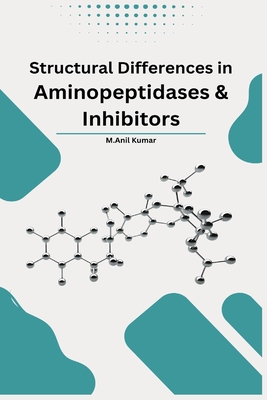You are here
Back to topStructural Differences in Aminopeptidases and Inhibitors (Paperback)
Email or call for price
Description
In the field of biochemistry, enzymes play a crucial role in biological processes. Aminopeptidases are a class of proteolytic enzymes that catalyze the hydrolysis of peptide bonds at the amino terminus of a protein or peptide. Inhibitors are molecules that bind to enzymes and reduce their catalytic activity. In this context, the study of structural differences in aminopeptidases and inhibitors is of great importance in understanding enzyme function and designing effective drugs.
The active site of aminopeptidases is a key structural element that determines substrate specificity and catalytic efficiency. It consists of amino acid residues that form hydrogen bonds, hydrophobic interactions, and metal ion coordination. Zinc binding is a common feature in many aminopeptidases and is essential for their catalytic mechanism. Protein conformation plays a critical role in the recognition and binding of substrates and inhibitors.
Enzyme-substrate complex formation is a dynamic process that involves multiple interactions between the enzyme and substrate. The kinetics of enzyme-catalyzed reactions is influenced by the concentration of substrate, enzyme, and product, as well as the pH and temperature of the reaction.
Molecular docking is a computational method used to predict the binding affinity of ligands to enzymes. It involves the generation of three-dimensional models of the enzyme and ligand and the calculation of their binding energy. Hydrophobic interactions, hydrogen bonds, and metal ion coordination are important factors in the molecular recognition of ligands by enzymes.
Transition state analogues are molecules that mimic the transition state of a catalytic reaction and bind tightly to the enzyme active site. Metal ions can act as cofactors in enzyme-catalyzed reactions, and their presence can affect the specificity and catalytic efficiency of aminopeptidases.
Inhibitors can be classified as competitive or non-competitive based on their mechanism of action. Competitive inhibitors bind to the active site of the enzyme and compete with the substrate for binding. Non-competitive inhibitors bind to a different site on the enzyme and reduce its activity.
